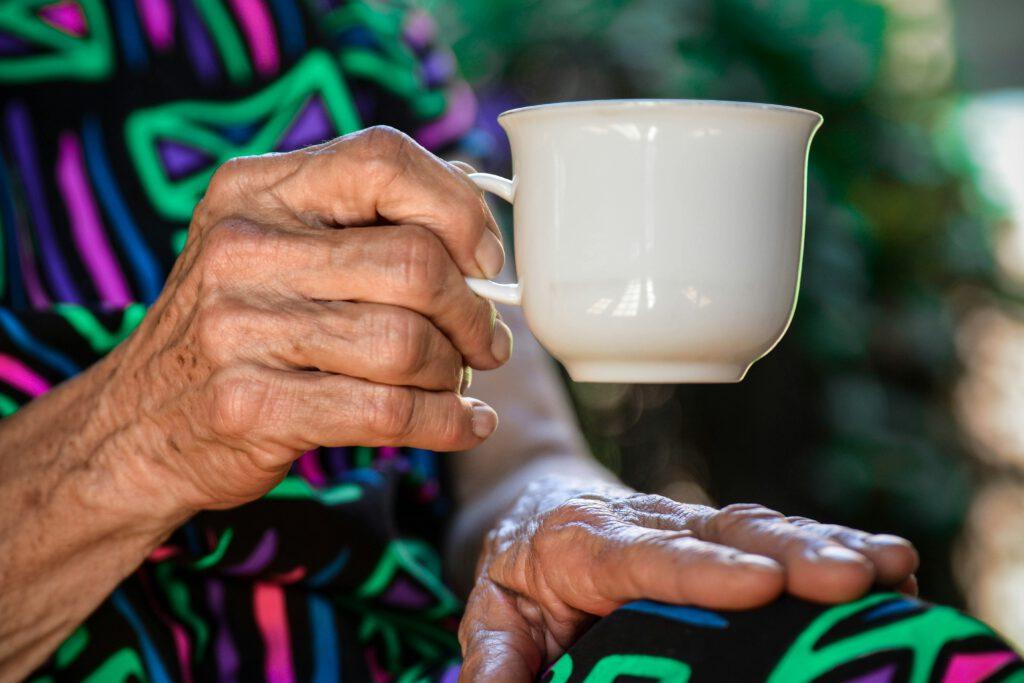Ayurveda offers a comprehensive approach to the treatment of rheumatism, also known as rheumatoid arthritis, a chronic inflammatory disease that mainly affects the joints. Ayurvedic treatment aims to balance the doshas, reduce inflammation, relieve pain and improve overall quality of life. Below we will discuss some Ayurveda approaches that can be useful for rheumatism.

Diet and nutrition (Ahara)
As rheumatism is understood by Ayurveda to be caused by an imbalance of Vata, adopting a diet to balance Vata is one of the main strategies. Therefore, prefer warm, nutritious and easily digestible foods, such as soups, stews, cooked vegetables and whole grains. Also prioritize the consumption of healthy fats, such as ghee, sesame oil and coconut oil. Moreover, for this dietary strategy, avoid cold, raw and dry foods, as they can increase vata and aggravate symptoms. In addition, consume anti-inflammatory foods such as ginger, turmeric, garlic and green leafy vegetables and reduce your intake of pro-inflammatory foods such as sugar, caffeine, alcohol and highly processed foods.
Herbs (dravyaguna)
Anti-inflammatory and analgesic herbs from Ayurveda can help treat rheumatism.
- Ashwagandha (Withania somnifera): Adaptogen that helps reduce inflammation and boost the immune system.
- Guggul (Commiphora mukul): Has anti-inflammatory and pain-relieving properties.
- Shallaki (Boswellia serrata): Known for its anti-inflammatory and pain-relieving effects.
- Haridra (turmeric): Has strong anti-inflammatory and antioxidant effects.
- Guduchi (Tinospora cordifolia): Strengthens the immune system and reduces inflammation.
Oil massages (Abhyanga)
Regular full-body massages using medicinal oils such as Mahanarayan oil or Dhanwantharam oil help to calm Vata, relieve pain and improve joint mobility.
Cleansing procedure (Panchakarma)
Ayurveda’s purgation therapy, Virechana, helps to eliminate toxins from the body and reduce pitta dosha, which can relieve the symptoms of rheumatism. In addition, performing medicinal enemas, also known as Basti, is particularly effective for calming vata and relieving joint pain. In addition, Swedana, a sweating treatment, supports detoxification and reduces muscle and joint stiffness.
Yoga and movement
Practising gentle yoga exercises promotes joint mobility and strengthens the muscles. Asanas such as Trikonasana (triangle), irabhadrasana (warrior) and Bhujangasana (cobra) can be useful. In addition, Pranayama, Yoga’s powerful breathing exercises, promote relaxation and help reduce stress, which can aggravate inflammation. Anulom Vilom Pranayama (alternate breathing) and Bhramari Pranayama (summary breathing) are particularly recommended.
Lifestyle changes (vihara)
Having a structured daily routine helps to stabilise the vata dosha and calm the nervous system. Stress management is also very important, use relaxation techniques such as meditation to reduce stress and the associated inflammation. In addition, having a healthy sleep cycle is fundamental, as it supports regeneration and well-being. Finally, regular physical exercise helps maintain joint mobility and promote general well-being.
Environmental adaptations
Creating a calm and orderly support environment promotes relaxation and emotional well-being. In addition, the aromatherapy strategy of using calming essential oils such as lavender, chamomile and sandalwood can help calm the mind and promote relaxation.
Regular monitoring
It is essential to regularly monitor the progress of the disease in consultation with medical professionals and Ayurvedic practitioners to ensure that the Ayurvedic methods chosen are effective and safe.
Specific ayurvedic formulations
- Rasnaerandadi Kashayam: An Ayurvedic formulation used for joint pain and inflammation.
- Maharasnadi Kwath: A decoction that helps to relieve pain and inflammation in the joints.
It is important that patients with rheumatism work closely together with their doctor and Ayurveda expert to ensure that Ayurvedic approaches are used safely and effectively in combination with their conventional treatment. Customisation of the treatment plan is crucial for the best possible results.
